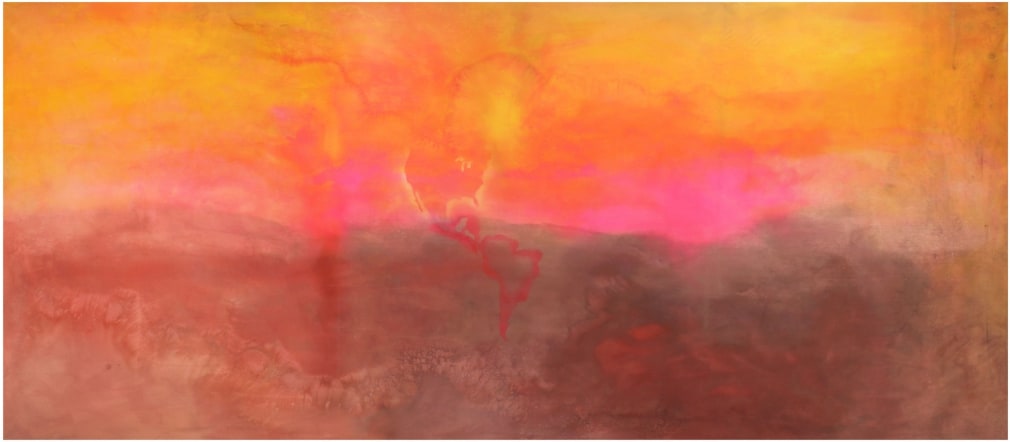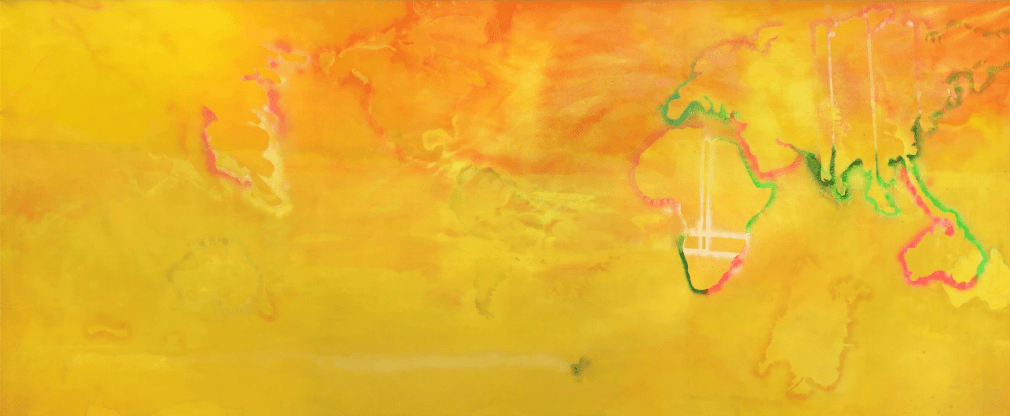After moving to New York in 1966, Frank Bowling began to create his Map Paintings (1967—71). Featuring continental landmasses spray-painted with stencils, these works marked a dramatic evolution in his pictorial language, reorienting his critical approach as he strived to combine an investment in abstract painting with political and personal concerns. The curator Okwui Enwezor expands, “by staking a ground around the idea that abstraction need not be disunited from content, especially as it intersects cultural experience and historical subject matter, Bowling boldly experimented with diverse modes of building a painted surface.”
Rejecting the graphic formalism of pure abstraction, Bowling structured the Map Paintings around references to post-colonialism and his own Afro-Caribbean roots. As a result, the art historian Kobena Mercer argues that these works “began to decolonize the entire archive of the imperial world picture.” As Mercer explains, through their combination of personal history and geography, a symbol of both home and exile, “[Bowling’s Map Paintings] brushed against the grain of postwar movements that decried oppression in the name of universal Man, opening instead onto a decolonial space of decentering.” Presenting painting as subjective, the series highlights the fallacy of formalism’s structural autonomy and universalism while constructing a political cartography centered on social and artistic identity.





